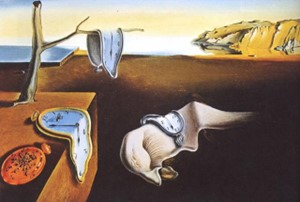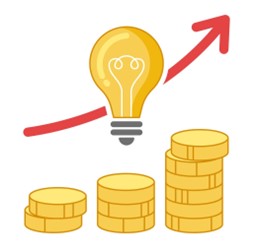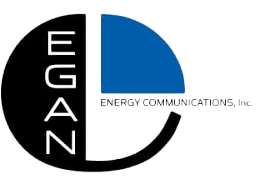
Do you remember this painting? Prints of it have adorned college dorm rooms for decades. It’s Salvador Dali’s “Persistence of Memory.” I wasn’t an Art History major, so I’m not sure exactly what the melting clocks are supposed to signify. But the fact I remember it decades after I took it off my own dorm wall attests to the truth of the painting’s title at least.
Yes, memory persists, even if the details or the actual facts tend to fade. Impressions formed years or decades ago remain alive and well, quietly lurking just below the surface of the conscious mind, waiting to be reawakened. As Maya Angelou once said, “People will forget what you said or what you did, but people will never forget how you made them feel.”
Which brings us, inexorably, to utility communications and marketing. The last few months of high energy bills means utility communicators may have to do a lot of shoveling out — acting differently and creating a new narrative — to reclaim their good name. You don’t want the lasting customer impression to be a doubling or tripling of their energy bills at a time of economic uncertainty and high inflation. That negative impression will leave a mark for a long time.
The Role of Confirmation Bias in Customers’ Minds
We’re talking about what social scientists call “confirmation bias,” which is people’s tendency to remember facts (or even rumors) that confirm their existing viewpoint, or often ignore facts or rumors that don’t conform to their viewpoint.
 Confirmation bias is a trick our brain came up with to help us make sense out of a really complex world. It is a rudimentary pattern-recognition system, though a deeply flawed one.
Confirmation bias is a trick our brain came up with to help us make sense out of a really complex world. It is a rudimentary pattern-recognition system, though a deeply flawed one.
If a customer thinks its utility is greedy or heartless, they will be disposed to remembering those things that buttress their point of view when high energy bills arrive. News articles about your utility’s benevolence will sail right on by, undetected by those who don’t believe such things are real or even possible, or will help them with their utility bill.
Media fragmentation, especially the rise of social media, has hardened peoples’ confirmation bias. Now, instead of watching the (presumably impartial) network evening news on ABC, CBS, or NBC, you can watch the “liberal” news on MSNBC or the “conservative” news on Fox News. You can read your local newspaper, The Wall Street Journal, or The New York Times. Or you dump traditional media altogether and see what the internet determines is news by checking Reddit, Facebook, Twitter, or any number of other apps. Like ordering dinner, today’s splintered media lets you pick and choose your news, filtered and prepared the way you like.
Communication Tip of the Month: High energy bills for customers means utility communicators may have to create a new narrative — based on facts and actions ─ to reclaim their good name and regain trust.
It’s Time to Create a New Narrative
Facts alone will not be sufficient to overcome confirmation bias. But acting differently and adopting a different narrative may be able to overcome that bias, providing the new story is compelling, deeds back up the new words, the messages are repeated frequently, and sufficient message discipline is exerted.
Why should utilities care? A comment I heard years ago from a customer of a Southwestern utility answers that question. Asked to describe how she felt about her utility, she said, “I’ve always hated them — I don’t know why, I just did.” I shared that story in a blog post a few years ago, along with the happy ending where the utility eventually was able to regain the trust of that customer and others who shared her confirmation bias.
 So if your customers’ energy bills have doubled or tripled over the winter, or you have experienced a high-profile safety accident, a corporate scandal, poor reliability, an unexpected leadership change, or a history of bad customer relations, you may need to craft a completely new narrative about your utility. Facts alone won’t work; you will need to show customers how these facts are part of a larger pattern, a storyline that is new, different, and relevant to them.
So if your customers’ energy bills have doubled or tripled over the winter, or you have experienced a high-profile safety accident, a corporate scandal, poor reliability, an unexpected leadership change, or a history of bad customer relations, you may need to craft a completely new narrative about your utility. Facts alone won’t work; you will need to show customers how these facts are part of a larger pattern, a storyline that is new, different, and relevant to them.
It should go without saying, but I’ll say it to be sure: The new narrative can’t just be spin. It needs to be based in reality. Saying the moon is made of green cheese doesn’t make it so, no matter how earnestly and frequently you say it is. That’s called “putting lipstick on a pig.”
Thinking about confirmation bias, I am reminded of the words of a CEO whose utility perished after a series of scandals, operational shortfalls, and bad customer experiences: “The biggest mistake we made was we didn’t listen to and respect our neighbors.”
It won’t be easy or fast to overcome your customer’s confirmation bias. But focused, sustained actions and communications can get the job done.
Moving Forward with a New Storyline for Your Utility
Let’s assume you have a solid track record on reliability or other basic operational attributes. Then, and only then, do you try to create a more favorable public perception by offering other amenities. Some trusted utilities have built additional customer goodwill by offering movies in a public park. Others pick up hazardous household waste at the customer’s premise at no charge.
 But before scheduling movies in the park, I would recommend utilities consider ramping up their free walk-through energy audits and boost their rebates for installing more efficient appliances. Even if they think their operations are top-quartile, their customers need to hear that from time to time. If you’re an electric utility with an above average score for reliability, toot your own horn!
But before scheduling movies in the park, I would recommend utilities consider ramping up their free walk-through energy audits and boost their rebates for installing more efficient appliances. Even if they think their operations are top-quartile, their customers need to hear that from time to time. If you’re an electric utility with an above average score for reliability, toot your own horn!
One additional thought: don’t make the mistake of thinking that adding a new program here and an amenity there, without a fundamental reboot, will get the job done. That’s a common mistake, one often made by professional sports teams. After years of putting an unwatchable product on the field, some executives thought the way to reclaim fan loyalty was to … add more stadium amenities! So now I’m going to pay $15 for a beer (up from $12 last season) to watch an awful team lose their way through another season? No thanks!
Customers live in the here and now, but they use confirmation bias to filter reality and make sense of complexity. The work of utility communicators and marketers centers on creating a positive narrative that plays to customers’ innate confirmation bias. You want to place your utility in that part of the customer’s mental geography reserved for trusted companies. Once there, providing that bias is buttressed with evidence, your lives will be a lot easier.

Salvador Dali (left) was a few decades ahead of his colleagues in the social sciences when he painted the “Persistence of Memory.” His painting is yet another example of art preceding science. Utility communicators and marketers can and should use art and science to mold and manage your customer’s perceptions. Or you can wait for those who wish you ill to do it, in ways you may not like. One thing’s for sure: it will be done.
For Further Reading…
Reading about overcoming confirmation bias is indispensable for communicators and marketers seeking to project a more positive image after a season of high energy bills. There are numerous resources that can help utility communicators and marketers dispel false narratives in favor of more favorable, fact-based ones.
One is The Debunking Handbook by John Cook and Stephan Lewandowsky. Another, prepared before the COVID-19 pandemic turned public health into an ideological war field, is Why Debunking Myths About Vaccines Hasn’t Convinced Dubious Parents, a 2015 Harvard Business Review article by Christopher Graves, chairman of Olgivy Public Relations, a global communications firm.
Additional Resources
Quick Hits for Utilities: Boosting Trust, ESG, and Communications
How to Keep Your Utility Brand from Becoming Toxic
Is Your Utility Brand Trustworthy?
Future-Proofing Your Utility with an Improved Customer Experience, article for Questline Digital

